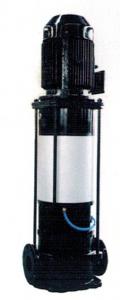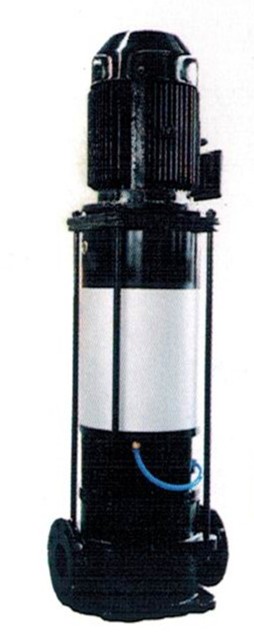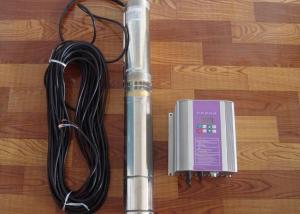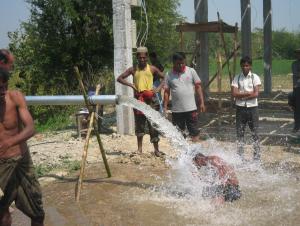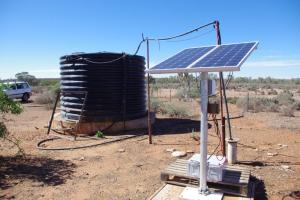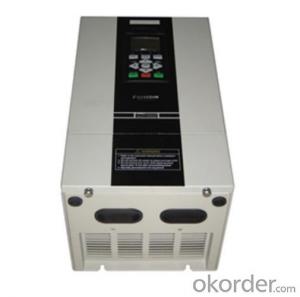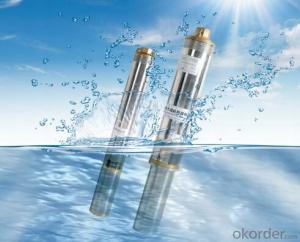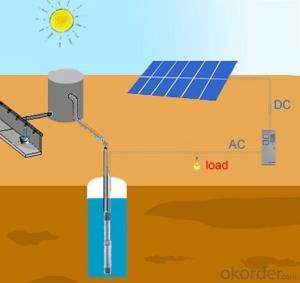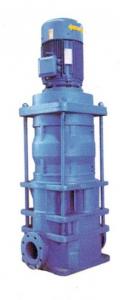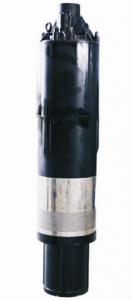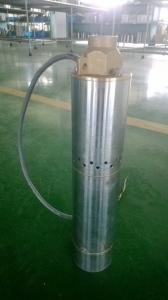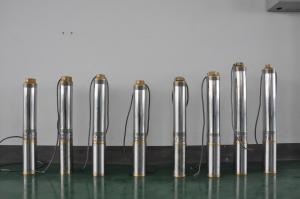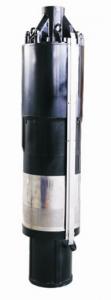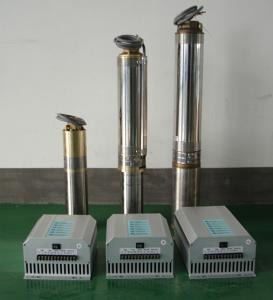Solar Pump Well L3D-10-180
- Loading Port:
- China Main Port
- Payment Terms:
- TT OR LC
- Min Order Qty:
- -
- Supply Capability:
- 300 sets /month
OKorder Service Pledge
OKorder Financial Service
You Might Also Like
Product description:
Product: Solar water pump
Model:L3D-10-180
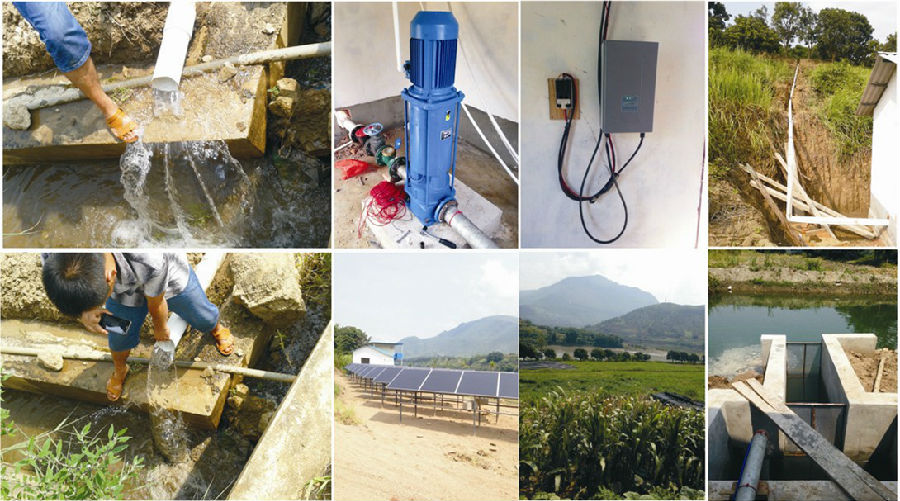
Appilication:
surface pump
for surface water of pond, river, lake
for irrigation of a big farm with 6000 m2 on the top of a small mountain
Product specification:
flow rate:10m3/ hour, 80m3/day.
lift: 10m-180m
pump diameter: 296mm
Pump installed on the ground, outlet to the water surface:4m
with AC motor, motor power:5.5kW
but only need solar power:3.2kW(while Grundfos pump needs at least 11.5kW solar power, our pump can save more than 50% solar panel power,save USD3600 cost for solar panel per set.
Material:
Pump inside: stainless steel and wearable nylon,it enables our solar pump to have 10 years sevice life.
Motor : AC motor, 380V , three phase , 50Hz. The pump also can connect with grid power directly.
Certification:
3 International patent
ISO9001
CE
Warranty:2 years
- Q: Can a solar pump be used in areas with high levels of bacteria or contamination in water?
- Yes, a solar pump can be used in areas with high levels of bacteria or contamination in water. However, it is important to note that a solar pump alone may not eliminate bacteria or contamination from the water. To ensure safe and clean water, additional water treatment methods such as filtration or disinfection should be implemented in conjunction with the solar pump.
- Q: Can a solar pump work at night or on cloudy days?
- Solar pumps are unable to operate at night or during cloudy days. They depend on sunlight to produce electricity, which then energizes the pump to extract water. In the absence of sunlight, the pump lacks the necessary energy source to operate. Consequently, solar pumps are exclusively designed for use during daylight hours when ample sunlight is present.
- Q: Can a solar pump be used in urban areas?
- Yes, a solar pump can be used in urban areas. Solar pumps are an environmentally friendly and sustainable solution for pumping water. They can be utilized in urban areas to provide water for various purposes such as irrigation, residential use, and even water supply for commercial establishments. The use of solar pumps in urban areas not only helps in conserving energy and reducing carbon emissions but also reduces dependence on conventional electricity sources.
- Q: How does a solar pump handle water with high levels of iron or manganese?
- A solar pump can handle water with high levels of iron or manganese by utilizing filtration systems or treatment processes. These pumps are often equipped with pre-filters or sediment removal mechanisms that can remove or reduce the iron and manganese content in the water before pumping it. Additionally, advanced solar pumps may incorporate additional treatment technologies such as oxidation or ion exchange to further manage and mitigate the levels of iron or manganese in the water.
- Q: Are there any limitations on the water quality or purity requirements for a solar pump?
- Yes, there can be limitations on the water quality or purity requirements for a solar pump. The efficiency and lifespan of a solar pump can be affected by factors such as high levels of sediment, minerals, or contaminants in the water. Therefore, it is important to ensure that the water source meets the manufacturer's recommended quality standards to maintain optimal performance and longevity of the solar pump.
- Q: Are there any safety concerns related to using a solar pump?
- Yes, there can be some safety concerns related to using a solar pump. One concern is the risk of electrical shock if there is a malfunction or improper installation of the equipment. Additionally, solar panels can generate high temperatures, which may pose a fire hazard if not installed or maintained correctly. It is important to ensure proper installation, regular maintenance, and follow safety guidelines to minimize these risks.
- Q: How does the angle of incidence of sunlight affect the performance of a solar pump?
- The angle of incidence of sunlight has a significant impact on the performance of a solar pump. The angle of incidence refers to the angle at which sunlight strikes the surface of the solar panels. When sunlight hits the solar panels at a perpendicular angle, it maximizes the amount of solar energy that can be converted into electricity. This results in optimal performance of the solar pump, as the panels can generate the highest amount of power. Conversely, when sunlight strikes the solar panels at a shallow or oblique angle, the amount of solar energy absorbed and converted into electricity decreases. This reduces the overall efficiency and performance of the solar pump. The angle of incidence is influenced by various factors such as the time of day, season, and geographical location. In order to ensure optimal performance, it is important to position the solar panels correctly to maximize the angle of incidence. This typically involves tilting the panels towards the sun or using tracking systems that adjust the panel's position to track the sun's movement throughout the day. Additionally, if the angle of incidence is consistently low due to factors like shading from nearby structures or vegetation, it can significantly impact the performance of the solar pump. In such cases, it may be necessary to make adjustments to the installation location or remove any obstructions to optimize the angle of incidence and improve the pump's efficiency. In conclusion, the angle of incidence of sunlight plays a crucial role in the performance of a solar pump. Maximizing the angle of incidence by positioning the solar panels correctly is essential for achieving optimal efficiency and ensuring the pump operates at its full potential.
- Q: How does the efficiency of a solar pump vary with different head heights?
- The efficiency of a solar pump typically decreases as the head height increases. As the water needs to be lifted to a higher point, the pump requires more energy to overcome gravity and maintain the desired flow rate. This increased energy demand can reduce the overall efficiency of the pump.
- Q: Are there any safety considerations for solar pump installations?
- Solar pump installations have several safety considerations that need to be addressed. Firstly, correct and secure installation of the solar panels is crucial in order to prevent potential hazards. This involves ensuring proper grounding and protection against lightning strikes. In addition, it is important to have a qualified professional handle the wiring and electrical connections to avoid any electrical risks. Adhering to the manufacturer's guidelines and local electrical codes is essential for a safe installation. Moreover, it is vital to protect the solar pump system from overheating. This can be achieved by providing adequate ventilation and shading to prevent excessive heat buildup. Furthermore, regular maintenance and inspections are necessary to detect any possible issues or malfunctions that could pose safety risks. This includes checking for loose connections, damaged components, and signs of wear and tear. Lastly, it is important to implement proper signage and safety precautions to alert individuals about the potential hazards associated with the solar pump system. This can involve signage indicating areas with high voltage, safety barriers, and clear instructions on how to safely operate and maintain the system.
- Q: How does a solar pump handle water temperature variations?
- A solar pump is designed to handle water temperature variations by adjusting its operation accordingly. It can efficiently handle both hot and cold water temperatures without any adverse effects on its performance.
Send your message to us
Solar Pump Well L3D-10-180
- Loading Port:
- China Main Port
- Payment Terms:
- TT OR LC
- Min Order Qty:
- -
- Supply Capability:
- 300 sets /month
OKorder Service Pledge
OKorder Financial Service
Similar products
Hot products
Hot Searches
Related keywords
